Meditation is a wonderful, safe and effective way to calm and clear your mind. Over time, it allows you to develop a deep understanding of yourself and others. Meditation allows you to focus your concentration and ultimately feel a deep sense of inner peace regardless of external circumstances.
Just as it takes time to develop muscle when you are exercising, it takes time to develop and experience the benefits of meditation. Not everyone understands that meditation is a process and the rewards of persisting are worth the challenge. It is common to try meditation for a few minutes and never try again.
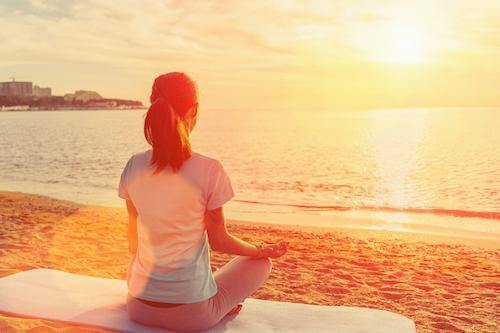
11 Steps for Effective Meditation
1. Find a Space
Joining a class can be a great way to benefit from group energy and learn new techniques. You can also meditate with your partner, and enjoy sharing the beautiful meditation vibes that you create together.
If you are limited by time or prefer to meditate alone you can meditate anywhere! Sitting on a bus or at your office desk, for example, you can turn your attention inwards and focus on your breath for a few moments. Other ideas for places to meditate include:
- A Garden: The backyard is your private outdoor place that can be your meditation oasis.
- Nature: A quiet park or a secluded glade deep in a forest can instantly relax you as you begin your meditation process. Nature is a gift is it that automatically calms your mind—the natural green colour of nature is soothing to the soul, the beauty of flowers, the sounds of birds; all inherently help to calm and still your mind.
- Near a waterway: The sound of waves gently lapping at the shore of a beach or the smooth rush of water flowing down a river, are ideal background noises when meditating.
- At work: At your desk or in a specific meditation space. Not all workplaces will offer meditation spaces for employees, but it is becoming increasingly popular to do so. If they do not have a space available perhaps you can consider introducing one.
- Your bed: to start your day before you even get out of bed can be very powerful in getting your day of to a great start. Before you go to sleep, a meditation on your bed can dramatically aid insightful dreams and improve the quality of your sleep. Did you know that 20 minutes of meditation equals two hours of sleep.
- A special place: As you travel through life you will discover places of special significance to you. If you feel comfortable and relaxed, your “special place” can be an ideal place for you to meditate.
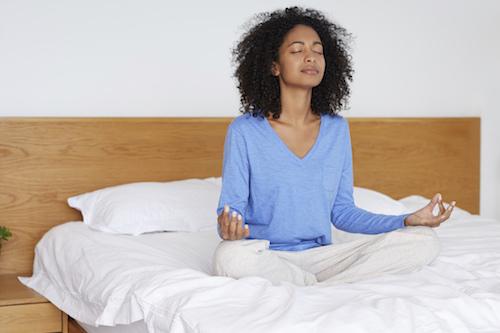
2. Set an Intention
Setting an intention when you meditate can be very powerful in achieving your outcome as it cuts out all the other “noise” in your mind and focuses your mind on where you want to go. When you set an intention you are controlling your mind, rather than having it control you!
3. Feel Relaxed
When meditating be sure to wear loose, comfy clothes that give your body room to breathe. Avoid tight-fitting jeans at all costs. Sweats, tanks, sweaters and the like are typical safe outfit choices. Ensure you are warm enough, relaxed, and well hydrated as you commence your meditation. Take off your shoes and perhaps your socks if the weather is warm, for added comfort.
4. Set a Timer
Anywhere from for ten minutes to half an hour. This will help you to immerse yourself in your meditation rather than worrying about what the time is.
5. Sit Comfortably
Being comfortable will enhance your meditation practice. Sit comfortably on the floor or on a firm chair. Sit on your sitting bones to ensure a straight spine to assist energy to flow throughout your body. If this is not possible due to an injury, for example, sitting as comfortably as you can is fine for effective meditation. Do not lie down as it is easier to fall asleep and you need to be awake and aware during a meditation session.
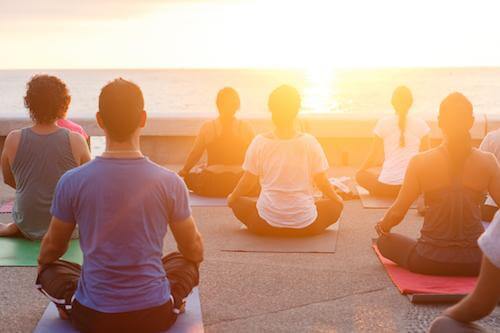
6. Eyes Open or Closed?
There are a lot of different ways to meditate and some people focus better with their eyes open than closed. For newbies, it is recommended that you start with eyes closed as your mind will be clear of visual stimulation.
If you decide to have them open, you can focus on an object like the flame from a candle or your favourite potted plant. Alternatively, you can keep your eyes soft and unfocused, staring at everything and nothing.
7. The Power of Your Breath
Tune into your natural breath. Start by concentrating on your 3 big deep breaths, to begin with. Your in-breath and your out-breath. This will start to “get you out of your head” and into your body where you can tune into what is really going on for you.
Your breath is a wonderful tool to calm your mind and your body. It is your life force, the energy that supports your body without you even thinking about it. The yogis say the length of your life is determined by the quality and depth of your breath.
8. Calm your Mind
Other meditation techniques include:
- Repeating a mantra in your head such as om, love or any word or phrase to go beyond thought. If thoughts arise, gently observe them and then focus back on your mantra. (more about this later in Types of Meditation below)
- Count backward from one hundred to distract the mind.
- Sit in awareness beyond thought, in a calm and relaxed state.
- Focus on a single point such as:
-
- A candle flame
- A rock
- A brick wall
- A tree
- A mountain
When you meditate initially, you will become aware of thoughts in your mind—observe them without judgement and let them go — like clouds passing through the sky. This observation creates a state of still, calm conscious awareness over time allowing you to tap into your inner peace.
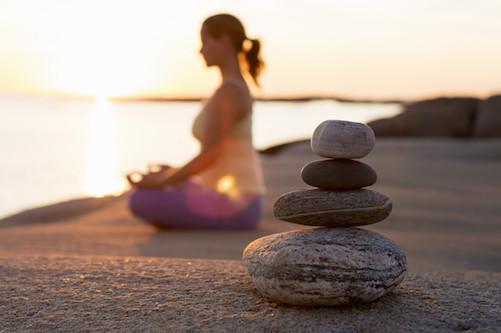
9. Commitment and Consistency
A sportsman does not become a champion after winning just one game.
Don’t expect to achieve inner peace after just a single successful session. Meditation is a journey that requires an ongoing commitment to generate ongoing peace and happiness.
Much like building muscle, the more you meditate the stronger your mind will become and the more you will benefit.
10. Types of Meditation
Other types of meditation include:
- Walking: Are you the type that just can’t sit still? Then this type of meditation is perfect for you. Walking meditation is similar to pacing. The practice involves walking in a straight line for a few meters, turning around and repeating. As you walk concentrate on the movements of your feet. This is best achieved by taking slow deliberate steps and not moving more than one foot at a time.

- The Mantra: A mantra is a word or sound used to focus your mind. Practitioners of Hinduism and Buddhism have used mantras as meditation aids for thousands of years. In meditation, you repeat the mantra until your mind enters a meditative state.The word Om is a very common and traditional mantra (as we have mentioned previously). However, a mantra can be anything so long as it helps you concentrate, and you don’t have to utilize a phrase from ancient Sanskrit. Examples of mantras include:
-
- Clarity
- I am happy
- My love is my power
- Strength
- Family
- I am empowered
- I am love
- Heart-Centred Meditation: Also known as Heart-Chakra meditation, this form of meditation is good for getting in touch with your true feelings and assisting you experience love and acceptance.
To do this, focus on your heart while meditating. This can be achieved by placing one or both hands over the left side of your chest. Imagine a warm golden light slowly, expanding from your heart to the rest of your body. As it grows, relax into the inherent peace and joy within.
- In the Moment Meditation: You could be a busy CEO or a stay-at-home mum, with barely five minutes to yourself. So how then do you practice meditation? You do it on the go. When feeling stressed or overwhelmed, take a few moments to concentrate on your breathing and nothing else. This will help to clear your head and recentre your energy allowing you to feel better equipped to tackle any challenges you may be facing.This method can be particularly effective during meal times. By focussing on your food, rather than being lost in thought you will naturally notice and enjoy the flavours, allowing you to savour the joy of eating in a relaxed way. Your digestive system will appreciate it too, as you digest food more effectively when you are relaxed and all your energy is not in your head over thinking or worrying.
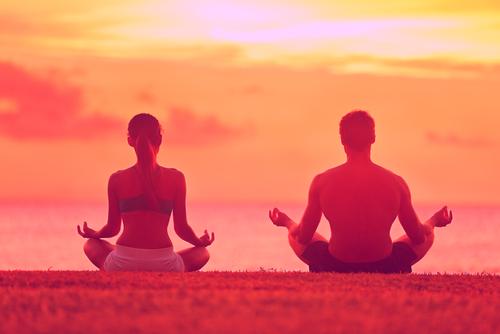
11. Enjoy the journey
Meditation over time will be something you look forward to and enjoy—a calm oasis from the busyness of life. On occasions, it may be uncomfortable as you become aware of uncomfortable feelings and learn to let them go with ease and grace. However, this is much more healthy than holding onto resentment, anger, guilt and other feelings that can weigh you down.
Meditation helps you to observe your feelings and let them go, rather than feeling like your feelings are controlling you. With consistent practice, meditation will put you in the driver’s seat of your life.
Your health will reap the rewards of meditation as your physical health directly relates to your mental and emotional well-being. With persistence and dedication over time meditation will become second nature and something to look forward to.
Meditation tips and facts:
- Meditate every day at about the same time to make it routine, like brushing your teeth.
- As you make more space in your inner world by calming your thoughts, your outer world will open up, and you will magically seem to have more time.
- Meditation can be done anytime, anywhere—shopping, on the bus, or while walking, for example.
- Focus on the breath to calm your mind and life can become a moving meditation of joy
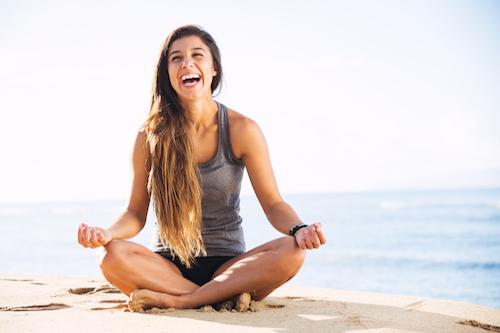
Learn why meditation is the key to a happier life, here.








